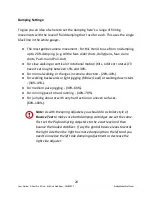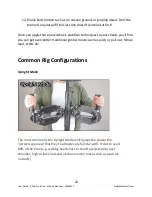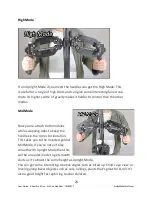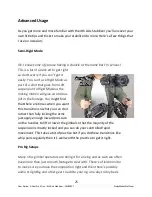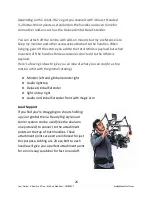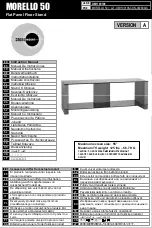
Cleaning, Maintenance and Care
After use where your stabilizer is subjected to dust or moisture you should wipe
with a dry or slightly moist cloth.
When you store your stabilizer for extended periods to minimise the stress on the
stabilizer you should adjust both of the spring adjusters to the minimum position.
The lubricated bearings are sealed so no lubrication is required to the bearings or
any other part of the stabilizer.
Note:
We build our stabilizers extremely tough but occasionally
under certain movements there can be exceptional forces
inadvertently applied to the stabilizer. Although unlikely this can
possibly lead to breaking forces being applied to components of the
stabilizer possibly causing catastrophic failure. This is especially
important during autonomous use where the stabilizer is mounted to
an object such as a car. In these types of scenarios it’s important to
protect your rig with a safety line in the event of a catastrophic
failure.
OK, that’s it! Congratulations! :)
Now you have all the knowledge you need to get started. Just remember that at
first you will need to practise those techniques before you use it on a shoot. You
might be a complete natural but I generally suggest you dedicate at least a few
hours shooting and reviewing footage to find the right settings for you. Then you
can go out with confidence and make all your very own silky smooth footage!
And one last thing, if you post some footage online then we’d love to see it so
please shoot me off a link?
Thanks again!
Scotty McPherson
30
User Guide - Glider Pro 3 Duo - 4th Axis Stabilizer - 20180917 ScottyMakesStuff.com





